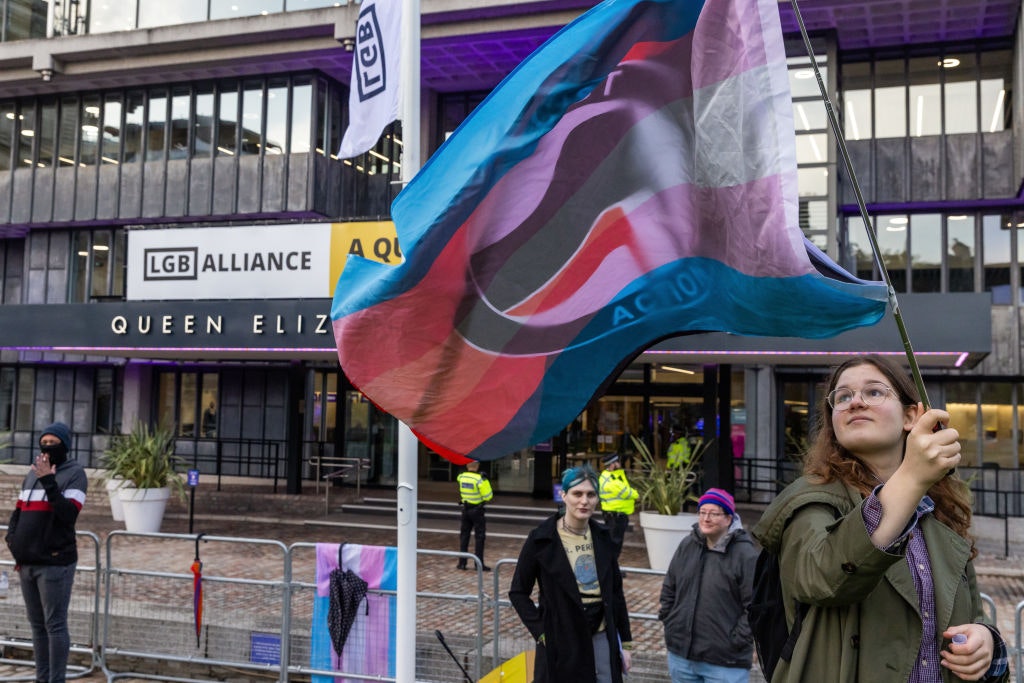The wrong diagnosis
Racism is not driving disparities in maternal death
Black mothers are almost four times more likely to die from childbirth than white women, a new report by the Women and Equalities Committee has concluded. Catherine Nokes, the Conservative MP and chair of the committee, described that as “shocking”. She added that the government and NHS have “not fully grasped that racism has played a key part in the complex reasons underlying the disparities, and that eradicating it is part of the solution”.
Why the big differences between ethnically similar groups?
This comes in the aftermath of a report last year commissioned by the NHS Race and Health Observatory. The chief executive of that body, Dr Habib Naqvi, criticised the lack of action since then, saying this new report showed the “stark outcomes that black women face as a result of racial discrimination in maternity care” and that the evidence “clearly shows that black and other minority ethnic women are often paying with their lives for the lack of action on racial bias in healthcare”.
The charity Birthrights, who also gave evidence to the committee, agreed. It says that action had to be taken on “racism that exists in the structures, cultures and practices that govern maternity care in the UK”. It added that ethnic minority mothers also faced being ignored or dismissed, as well as having to deal with issues like “racial microaggressions”.
The committee concluded that more money should be provided to maternity units, criticised the failure of a government taskforce to tackle disparities for not meeting regularly and not mentioning racism in its terms of reference, said more data should be collected on ethnicity, that more black women should work in maternal health, and called on the government to set a national target to end disparities.
If racism in the NHS were directly leading to the deaths of non-white women then that would be a shocking revelation that demanded reform. The evidence the committee draws on presents a more nuanced picture however.
The majority of the statistics underpinning the committee report come from MBRRACE-UK, which examines maternal mortality. Its 2022 report does indeed show that black, Asian and mixed-race women all die at higher rates than white women. However, the committee omits the other group in their data, which shows that the “Chinese / other” group has the lowest rate of maternal mortality, even lower than for whites. If one ethnic minority is doing better than whites, that might suggest (white) racism is not the main factor.
Of course, it could be an outlier, especially as the data on page 13 shows only 194 maternal deaths, with just six in the “Chinese / other” category. There is a significant disparity between the different ethnic groups however, with Asian women dying at a rate of 16.12 (per 100,000) compared to 33.99 for black women. The disparity between white women (9.23 per 100,000) and Asian women is much smaller than that between Asian women and black women. If racism really were to blame, that would suggest a hierarchy of racism, with Chinese women at the top and black women at the bottom.
The MBRRACE-UK report also includes data on maternal mortality by the country of birth of the mother. This shows that women born in Britain had 10.11 deaths per 100,000, but women born in Ghana had 34.39 deaths. That might suggest race was important. However we also have the data for those of South Asian origin: Pakistanis on 7.94, Indians on 12.08, and then Bangladeshis on a huge 33.83 per 100,000. If racism is to blame, why are there such big differences between these ethnically similar groups?
That is a sin of omission, not deliberate racial prejudice
There’s also the difficult question of exactly how racism causes these deaths. The committee says the leading indirect cause of death is cardiac arrest, whilst the leading direct cause is thrombosis. Both correlate heavily with being overweight or obese. Indeed, 27 per cent of those who died were obese, and 24 per cent were overweight. In total, 60 per cent of the women who died had pre-existing medical problems, with Dr Christine Ekechi telling the committee that black and Asian women were over-represented in this group. Many ethnic minority women were more vulnerable before they even interacted with the NHS.
Expert witnesses did tell the committee that (racial) microaggressions were a factor, and that there was a lack of cultural consideration. However, the leading correlation for death was the socio-economic background of the women, with those coming from the most deprived areas being significantly more likely to die, and ethnic minority women being more likely to live in those deprived areas.
Expert witness Dr Matthew Jolly told the committee that there was also an issue of genetic predisposition, with Asians being more likely to get diabetes. He went on to say that there was “growing insight” that the NHS might be considered “structurally racist” because of the expectation that the white body was the default. There is an element of truth to this, whether it is oximeters not working properly, or insufficient training on how to spot the signs of sepsis when it comes to people with darker skin, but the culture war language is unhelpful.
If the white body is the medical default, then that reflects the reality that medical advances are concentrated in Europe, North America and East Asia, where a majority of people are lighter skinned. That is a sin of omission, not a result of deliberate racial prejudice. Similarly, whilst sepsis is a major cause of maternal mortality, and there may be a lack of training to spot the signs of sepsis on dark skinned people, the NHS is grimly bad at dealing with sepsis amongst people of all races.
What’s more, examining some of the stakeholders consulted by the committee shows that they have a strong political bent. The charity Birthrights want to “decolonise” medicine, impose mandatory anti-racism training, and require the NHS to implement a “racial equity action plan”. These go well beyond what the evidence demands. Implementing such proposals would risk transforming medicine into dangerous racial politics — something that is already happening in the USA.
The MBRRACE-UK report shows that 62 per cent of maternal mortality occurred under good care, or when improved care would have made no difference. In 38 per cent of cases, then, improved care might have saved the life of the mother. Whilst there are race disparities, these are largely correlated with poverty and obesity rather than overt staff racism. The Women and Equalities Committee should have focused on addressing these evidence-led issues rather than fixating on racism, which guaranteed them headlines but is largely irrelevant to reducing maternal mortality. Mothers’ lives are too important to play politics with.
Enjoying The Critic online? It's even better in print
Try five issues of Britain’s most civilised magazine for £10
Subscribe














